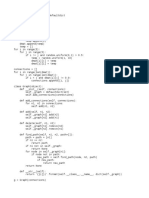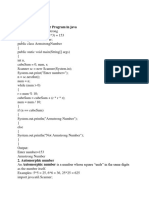0% found this document useful (0 votes)
55 views8 pagesFAssignment 6 - Jupyter Notebook
The document is a Jupyter Notebook containing assignments related to graph theory using the NetworkX library. It includes tasks such as drawing complete and cycle graphs, checking isomorphism between graphs, and visualizing the union, intersection, and Cartesian product of two graphs. The results show that K5 is not isomorphic to the complement of C5, while G1 and G2 are isomorphic.
Uploaded by
Great OnCopyright
© © All Rights Reserved
We take content rights seriously. If you suspect this is your content, claim it here.
Available Formats
Download as PDF, TXT or read online on Scribd
0% found this document useful (0 votes)
55 views8 pagesFAssignment 6 - Jupyter Notebook
The document is a Jupyter Notebook containing assignments related to graph theory using the NetworkX library. It includes tasks such as drawing complete and cycle graphs, checking isomorphism between graphs, and visualizing the union, intersection, and Cartesian product of two graphs. The results show that K5 is not isomorphic to the complement of C5, while G1 and G2 are isomorphic.
Uploaded by
Great OnCopyright
© © All Rights Reserved
We take content rights seriously. If you suspect this is your content, claim it here.
Available Formats
Download as PDF, TXT or read online on Scribd
/ 8






















































































